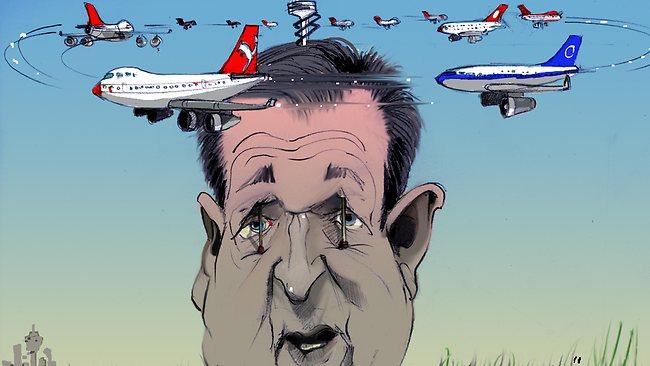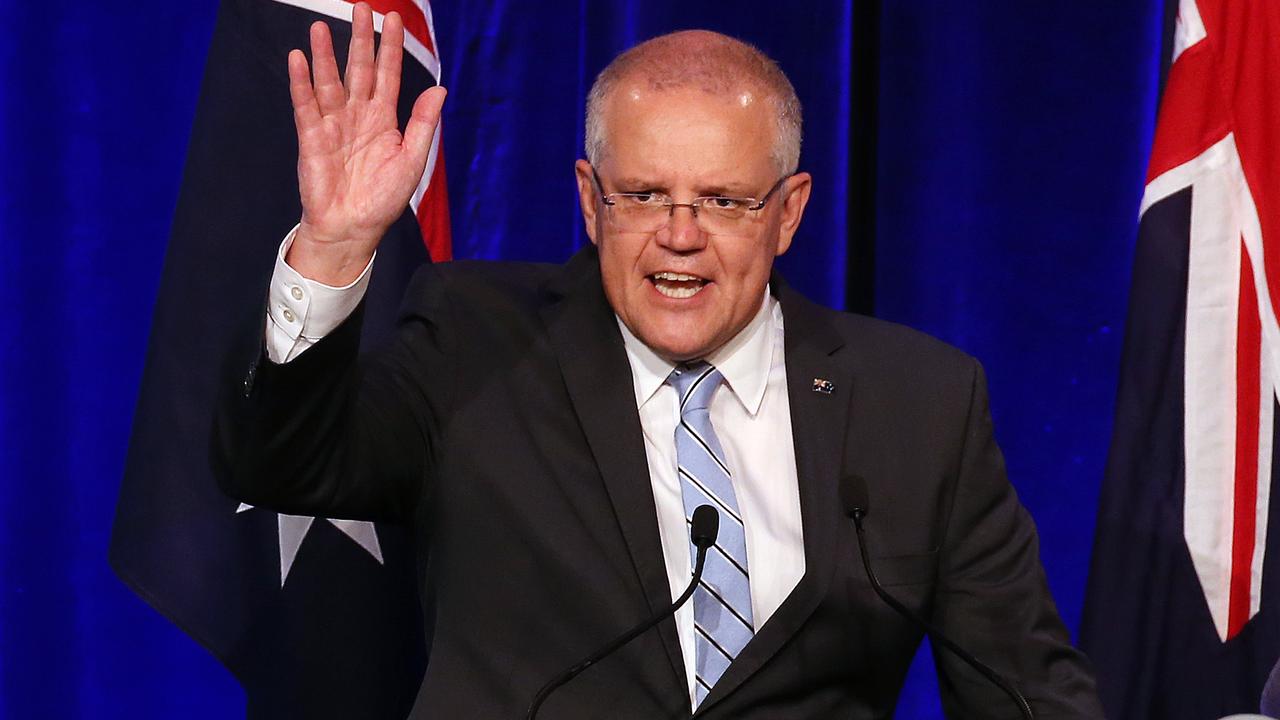Airport plan grounded as politicians back away

SLEEPWALKING is a state of low consciousness in which people perform limited activities. The National Sleep Foundation of the US estimates that somewhere between 1 per cent and 15 per cent of people are afflicted with some form of sleepwalking. It occurs mostly in children.
Unfortunately, in modern politics an increasing number of political leaders should be diagnosed with the condition. Too often our political class shuns long-term essentials of public policy planning to satisfy its short-term political needs. In the process it is sleepwalking towards long-term disaster, seemingly comfortable in the knowledge that by the time it strikes politicians will be safely ensconced in retirement, on taxpayer-funded parliamentary pensions, no less.
No better example of this is on display at the moment than the inaction over the building of a second airport for Sydney. NSW Premier Barry O'Farrell is mostly to blame for the standoff, but the federal government must also bear some of the criticism for the policy impasse we are witnessing.
This is much more than a Sydney issue. The implications of inaction, or slow-to-move action, will affect the national economy, not just NSW.
A joint study on aviation capacity in the Sydney region, conducted by the NSW and federal governments, found that failure to address the increased demand for aviation services in Sydney would cost the national economy $59.5 billion by 2060, and $34bn in foregone gross domestic product. Those figures are in current dollar terms.
As soon as 2027 the economic impacts will begin to be felt, even if short-term solutions are partially embraced. As the report states: "The need to act is clear. The costs of not acting are substantial."
The central component of the research involves a recommendation for a second Sydney airport within the Sydney basin, a politically sensitive subject, to be sure.
The two options are the long contentious site at Badgerys Creek in Sydney's outer western suburbs and Wilton in the southwest.
Badgerys Creek is far and away the favoured option, unanimously so by the varied members of the committee, not least because of the infrastructure already in place to service the region and the fact the commonwealth already owns the land, having purchased it way back in the 1980s after a 1979 study first recommended the site.
Wilton is farther away from Sydney's central business district and the commonwealth has yet to acquire the proposed site for an airport development. But the combination of low aircraft noise impacts on existing residences in the area, and the growth corridor potential for the southwest, makes Wilton viable, if not the best-practice option.
The study, findings of which were handed down last month after more than two years of research, is more than 3000 pages long. Partisanship was put to one side, with the committee consisting of a mixture of bureaucrats, business leaders and aviation and planning experts.
It ruled out some options that had been canvassed previously in the political debate, and after far less rigorous studies. For example, the RAAF base at Richmond was deemed unsuitable because of the infrastructure bottlenecks on the site and to access it. The concept of a very fast train link to Canberra airport acting as a substitute to building a second airport was ridiculed as "too far from the Sydney market to serve as Sydney's second major airport", despite its usefulness for servicing NSW's southern regions.
Apart from the particulars ruling out the Canberra option in the report, it just fails the common-sense test. Telling tourists they will land at a capital city more than 300km from Sydney when choosing to fly to Sydney just doesn't make sense. And that's before assessing the costs of a train link and the complexity of feeding it into a Sydney network already at brink capacity. The report spells out the problems in some depth.
After years of study and thousands of pages of research being committed to print, the task of addressing the need for a second airport has been handed over to our political class, only to see this difficult issue once again bogged down in political debate. It now looks like going nowhere, which just shouldn't be an option.
Both sides of the main party divide ruled out the building of a second airport at the committee's preferred site of Badgerys Creek for base political considerations. Concerns of a voter backlash in the growth corridor of marginal seats has trumped the best interests of those residents and the nation at large, notwithstanding the significant investment in land acquisition the commonwealth has undertaken in the proposed area for decades now.
Once upon a time, politicians were prepared to fight for what was in the best interests of voters, even if that involved convincing those same voters of that fact. It's called leadership.
As the report finds, an airport in a local community significantly boosts jobs and increases the likelihood of it becoming a business district of its own. That would help commuters find local jobs, improving their quality of life.
We also know property prices in areas close to airports go up. The biggest misconception is that aircraft noise suppresses property values. The soaring cost of buying in the inner city of Sydney helps to counter that claim, plus aircraft technology means planes are much quieter than they used to be. The Dreamliner and the Airbus A380 are 50 per cent and 75 per cent quieter than their predecessor aircraft. On Tuesday Qantas chief executive Alan Joyce noted that studies had shown that grunting by some tennis players was louder than modern aircraft noise.
Nevertheless, false NIMBYism has won the day, as it so often does when political cowardice trumps political courage.
That leaves Wilton as the only long-term (political) option to satisfy Sydney's aviation needs, with the report's short-term fix including more flights an hour out of Mascot in the period before a second airport can be built.
Again a political standoff has prevented action.
O'Farrell ruled out any airport in the Sydney basin before the state election (in a local Lithgow newspaper, no less) and he won't even discuss the prospect of building one in his second term for fear that represents a broken promise.
In terms of risk versus reward, O'Farrell's promise may have helped the Coalition win a seat or two (given the size of its majority, who cares?), but it has cost the state and the nation, certainly if he extrapolates the commitment into a second four-year term.
Federal Transport Minister Anthony Albanese has indicated a preference for Wilton, but he won't countenance an increase in air traffic at Mascot because it would send more planes roaring over his inner-city electorate.
Albanese deserves credit for at least agreeing with the second-best option the report recommended, but he still needs to convince his cabinet. And because building an airport requires state and federal governments to come together, his unwillingness to give ground about what to do at Mascot makes a deal with O'Farrell harder to achieve.
The politics of aircraft noise is much louder than the aircraft noise itself, and our political leaders lack the internal fortitude to put long-term planning ahead of risks to their short-term popularity.
Peter van Onselen is a Winthrop professor at the University of Western Australia.


